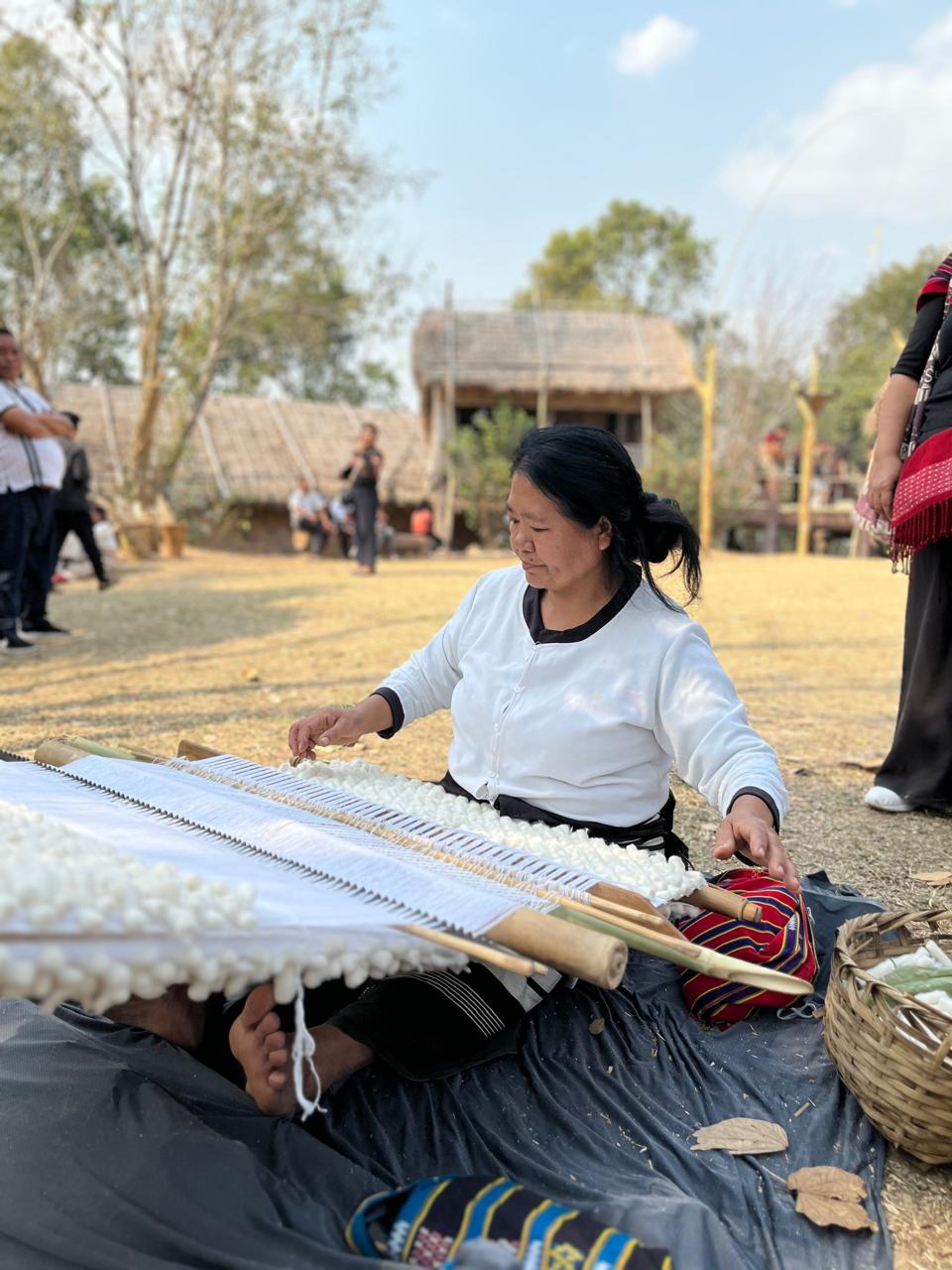Nestled about 90 km south of Aizawl, Thenzawl is a vibrant hub of Mizo handloom heritage. Here, weaving isn’t just craft—it’s the heartbeat of the community.
1. A Handloom City Born from Tradition
Thenzawl is often called a “Handloom City” for good reason. With over 1,750 active looms and 1,800 weavers as of 2017, weaving supports whole families—especially women—who learned the art young and mastered it through generations. These textiles are sold across India and beyond, bringing pride and income to the region .
2. Puan: The Signature Cloth
At the heart of Thenzawl’s weaving is the puans—traditional Mizo cloth worn like sarongs. Woven mostly on back-strap (loin) looms or fly-shuttle (frame) looms, puans tell stories through color and motifs. A simple plain puan can take over a week, while patterned ones may take a full month.
3. Varieties of Puans and Their Meanings
The rich complexity of puan weaving in Thenzawl includes:
- Pawndum: A black cloth with bold red and grey stripes. It carries deep cultural weight—used for dowry, funerals, or ceremonial rituals.
- Ngotekherh (Puan Hruih): Features black-and-white stripes. Worn for festivals as a mark of celebration.
- Tawlhlohpuan: A warrior’s cloth. Indigo with red and green stripes, symbolizing strength. Traditionally worn before battles or to honor bravery greenfinch.net.in+7incredibleindia.gov.in+7asiainch.org+7.
There are also Hmaram, Puanchei and other designs—each a unique thread in Mizo identity.
4. Weaving Techniques and Looms
Thenzawl weavers skillfully use:
- Back-strap looms: Tensioned by a belt around the weaver’s waist.
- Fly-shuttle looms: With treadles, warp beams, and bamboo frames—allowing faster production and wider cloths.
They prepare yarn through warping, bobbin winding, shuttle work, and pressing with a reed—combining age-old craft with local materials like char wood .
5. Motifs That Speak
Mizo motifs come alive through weaving—stars, flowers, tiger stripes, ginger blossoms, and more. Each motif has tribal and cultural significance, telling tales of identity, status, and values .
Natural dyes—like turmeric for yellow, plant roots for red, ash-blue—were once used, although synthetic yarns now dominate.
6. Beyond Fabric: Cultural & Economic Impact
Weaving isn’t just craft—it’s a way of life. Puans denote marital status, occasions, clan, and personal pride. For instance, brides carried Pawndum as dowry, and warriors wore Tawlhlohpuan for valor medium.
Economically, weaving uplifts Thenzawl’s households. Many now export globally, supported through government cooperatives and training centers.
Visit Thenzawl: Experience the Weaving Roots
Tourists can:
- Visit weaving homes – Watch elders at work, learning facial expressions and hand movements.
- Shop local – Buy puans by hand, from everyday gauzy wraps to bold ceremonial pieces.
- Learn a bit – Try weaving on a back-strap loom under guidance.
- Go deeper – Check out the Handloom Complex run by the government.
Why It Matters Today
In a fast world, Thenzawl stands as a living reminder of community, creativity, and cultural continuity. These woven threads keep Mizo identity intact—deep, resilient, and colorful.
Final Weave
“Threads of Tradition, Woven in Thenzawl” is more than a theme—it’s a living tapestry of heritage, skill, and social fabric. Every puan carries a piece of Mizo history and heart. If you’re a traveler seeking depth and color, don’t miss this weaving marvel.

